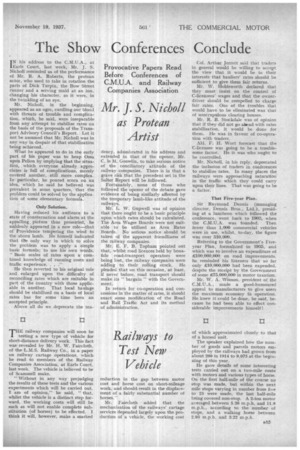Railways to Test New Vehicle
Page 17

If you've noticed an error in this article please click here to report it so we can fix it.
THETHE railway companies will soon be a new type of vehicle for short-distance delivery work. This fact was revealed by Mr. H. W. Faircloth, of the L.M.S. Railway Co„ in a paper on railway cartage operations, which he read to members of the Railway Companies Association, at Earls Court, last week. The vehicle is believed to be of Scammell make.
" Without in any way prejudging the results of these tests and the various experiments which will be carried out. I am of opinion," he said, "that,. whilst the vehicle is a distinct step forward, the working costs will still be such as will not enable complete substitution (of horses) to be effected. I think it will, however, make a marked
reduction in the gap between motor cost and horse cost on short-mileage work, and should result in the displacement of a fairly substantial number of horses."
Mr. Faircloth added that the mechanization of the railways' cartage services depended largely upon the production of a vehicle, the working cost of which approximated closely to that of a horsed unit.
The speaker explained how the number of goods and parcels motors employed by the railways had grown from about 200 in 1914 to 9,075 at the beginning of this year.
He gave details of some interesting tests carried out on a two-mile route with motors and various types of horse. On the first half-mile of the .course no stop was made, but within the next mile stops varying in number from five to 25 were made, the last half-mile being covered non-stop. A 2-ton motor averaged between 5.26 m.p.h. and 11.9 m.p.h., according to the number of stops, and a walking horse between 2.95 m.p.h. and 3.22 m.p.h.




























